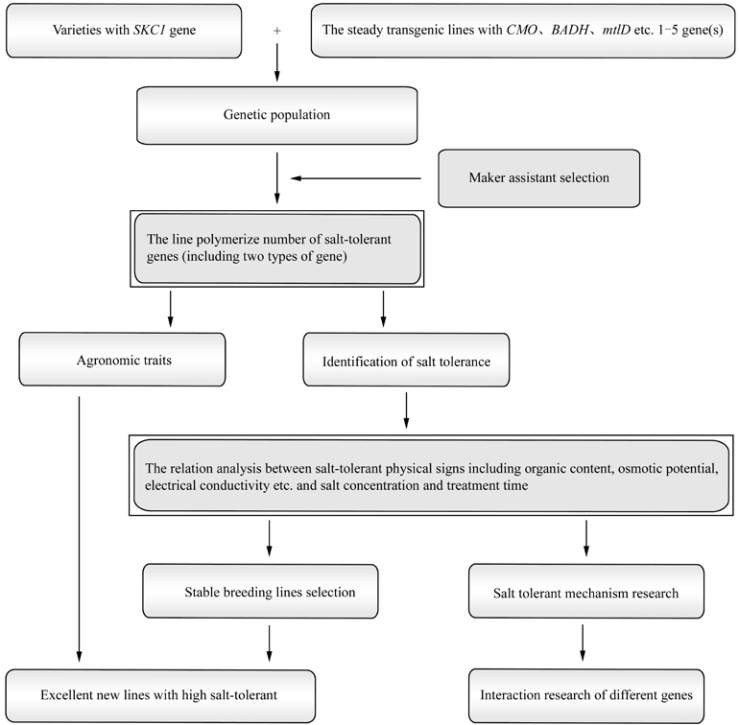Basic HTML Version



Rice Genomics and Genetics 2012, Vol.3, No.7, 39
-
49
http://rgg.sophiapublisher.com
47
breeding of plant salt tolerance, it also provides a
possibility to combination of rice conventional
breeding and molecular breeding (Gregorio et al.,
2002; Garcia et al., 2004; Flowers, 2004). However,
during the process of molecular breeding involved in
salt tolerance by gene engineering, scientists have
found some important questions which still were not
clear. For instance, under salt stress, which factors
were involved in accumulation of osmotic regulation
substances? What are the first signal and transmitting
process? What are the interaction and regulatory
networks among several salt tolerance genes?
Figure 1 The molecular polymerization of two types of genes in rice
To solve the problem mentioned above, enhance the
research of molecular mechanism involved in salt
tolerance and application of production practice, the
direction of research should be focused on various
aspects, first of all, enhance the study of molecular
mechanism involved in salt tolerance, this is the
foundation of improve relevance and efficiency of
molecular mechanism involved in salt tolerance.
Secondly, combine multifunctional genes, major genes
and minor genes. Rice salt tolerance is controlled by
many genes, it is comprehensive performance of
several physiological traits. As a result, during the
research about salt tolerance of rice about
physiological and gene engineering, more attention
should be paid on synergistic action among several
key factors. It is still unknown that the key factors
which control rice salt tolerance. According to
relevant background, isolation, cloning and genetic
transformation of salt tolerance gene should carry on,
in order to breed new varieties of salt tolerance rice by

